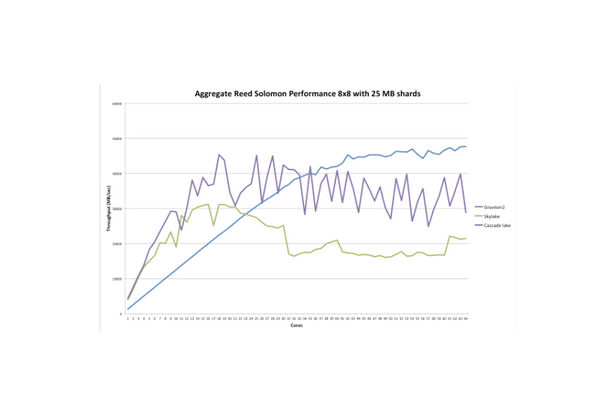Time to First Byte and Streaming Media

Time to first byte is a key performance metric for video streaming. Learn how MinIO improves customer experience and reduces churn.
Read moreA collection of 69 posts tagged with "Performance"

Time to first byte is a key performance metric for video streaming. Learn how MinIO improves customer experience and reduces churn.
Read more
Together, MinIO and Commvault provide a software-defined and hardware agnostic backup, restore and replication system that is both simple and powerful at the same time.
Read more
First introduced in late 2021, multi-site Active-Active Replication has grown to be one of the most impactful MinIO features. MinIO has long had the ability to replicate between buckets to synchronize objects, delete operations and metadata changes, but Multi-site Active-Active Replication goes beyond bucket replication to synchronize all buckets, IAM, security tokens, service accounts and bucket-level configurations. As businesses gather
Read more
In this post, we will learn the process of gathering metrics from a Python application integrated with OpenTelemetry, storing them in Prometheus, and visualizing the data in a Grafana dashboard. A great tutorial by AJ from MinIO.
Read more
Enabling and tuning transparent data compression in MinIO.
Read more
Setting the record straight on how to compare multiple storage technologies.
Read more
There is a lot of momentum around Apache Arrow these days. A favorite of developers and data practitioners, its use in business-critical applications has grown considerably and data driven organizations like Dremio, InfluxData, Snowflake, Streamlit, and Tellius are all heavily invested. The drivers of this adoption are superior interoperability, simpler data architectures, greater speed and efficiency, more choice of tools
Read more
While users take it for granted that infrastructure is available, you know that metrics, monitoring and alerting are critical to operations.
Read more
Stellar performance-at-scale, flexibility and consistency make object storage the best choice for cloud-native enterprises.
Read more
MinIO is a strong believer in transparency and data driven discussions. It is why we publish our benchmarks and challenge the rest of the industry to do so as well. It also is why we develop tools that allow a clean, clear measurement of performance and can be easily replicated. We want people to test for themselves. Further, we do
Read more
Dig into MinIO internals and learn how this distributed object storage solution is optimized to handle thousands of versions of a single object.
Read more
One-click automated performance testing for MinIO clusters.
Read more
WARP performance testing MinIO on Supermicro Cloud DC servers with NVMe drives.
Read more
Protecting blocks is not the same as protecting objects. Learn where block-level RAID falls short compared to erasure coding in distributed object storage.
Read more
MinIO server pools enable rapid expansion without the downtime and risk of rebalancing.
Read more
Cassandra is a popular, tried-and-true NoSQL database that supports key-value wide-column tables. Like any powerful tool, Cassandra has its ideal use cases - in particular, Cassandra excels at supporting write-heavy workloads, while having limitations when supporting read-heavy workloads. Cassandra's eventual consistency model and lack of transactions, multi-table support like joins, subqueries can also limit its usefulness. However, using
Read more
Over the last decade or so, object storage use cases have evolved considerably as they replace traditional file and block use cases. Specifically the need to work with small data objects is becoming commonplace. Yes, there’s still plenty of large objects but small objects are becoming more prevalent than large for specific workloads and application environments. Traditional object storage
Read more
The recent announcement from AWS about the general availability of their new ARM-powered Graviton2 servers caused us to take another look at the performance of these ARM servers. In this blog post we describe the results which you may find surprising. Introduction MinIO [https://github.com/minio/minio] is an Apache licensed, open source S3-compatible object storage server with a
Read moreIntroduction While MD5 hashing is no longer a good choice when considering a hash function, it is still being used in a great variety of applications. As such any performance improvements that can be made to the MD5 hashing speed are worth considering. Due to recent improvements in SIMD processing (AVX2 and especially AVX512) we are providing a Go md5-simd
Read more
Veeam's V10 release adds object storage support in a big way. Find out how these two software stacks play together to deliver performance oriented backup and restore.
Read more